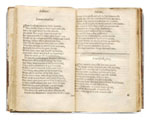text (![]() ) n.
) n.

a. The original words of something written or printed, as opposed to a paraphrase, translation, revision, or condensation.
b. The words of a speech appearing in print.
c. The body of a printed work as distinct from headings and illustrative matter on a page or from front and back matter in a book.
– excerpted from dictionary.com
A text is something that can be read. But what if we did not limit our reading to novels and newspapers, but thought of ways to read advertisements and political speeches with the same critical eye? And what if we took seriously the phrase, "I could read her like a book"? What if we took those same principles of reading and applied them to the world around us: to people, clothing, airplanes, nightclubs, Coke bottles, cultures, sofas, museums, and subway tokens?
All the world's a text.
– Robert Scholes, Protocols for Reading

What if, as Robert Scholes suggests in his book, Protocols for Reading, all the world is a text? Not only can we read Shakespeare, but we can read the leather folio in which Shakespeare is bound. We can try to understand what that expensive binding says about the culture from which it comes: how the people who made it feel about books, about learning, about technology, about material goods. We can read the museum in which that folio is found. How do people in the 21st century seem to feel about books, learning, the preservation of the past? We can read the crowd gathered around the Plexiglas case in which that folio is contained. We can read ourselves reading that crowd. And so on.
There is a lot of reading to be done.
NEXT: thinking about media studies
